- | 8:00 am
Inside the robot-powered grocery store of the future
Fulfil Solutions has rethought every aspect of the grocery fulfillment center to eliminate the pain points of online market shopping.
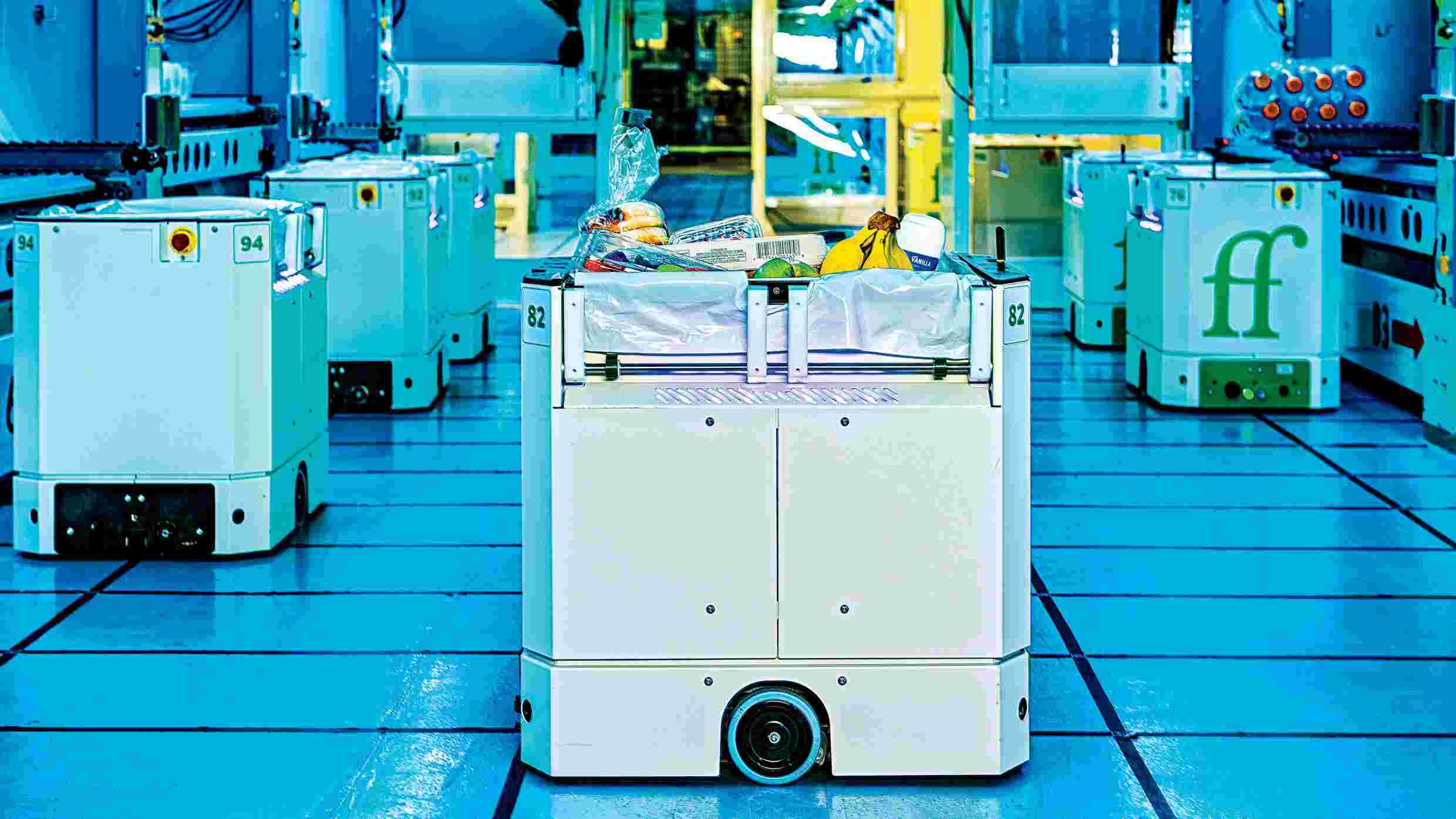
In e-commerce, little is more personal than grocery shopping. A single mistake can torpedo a market order’s whole purpose. Say you want to make a pasta dinner but your order arrives with tomato sauce, rather than the canned tomato paste your recipe calls for. Or the noodles are not gluten-free, as requested. Suddenly the convenience of shopping online has curdled into annoyance.
Of course, that may be only the beginning of the irritation. After all, you paid a $9.95 delivery fee for your ruined dinner. The exasperation ripples through every node in the grocery commerce system. The shopper who’s trying to make this gig work rifled through 30,000 supermarket SKUs in a scavenger hunt rivaling Guy’s Grocery Games to tackle your shopping list. The store itself isn’t exactly winning either: It may pocket a grand total of $2 or $3, after delivery costs eat into grocery’s already slim profit margins.
“In no other e-commerce experience do you order something and get something else,” says Mir Aamir, president and CEO of Fulfil Solutions, a robotics startup that seeks to fix a growing, but fundamentally broken, segment of the $6.3 trillion e-commerce business.
GROCERY’S ONLINE MOMENT—AND ITS PROBLEMS
Groceries are in the throes of their biggest industry shakeup since conveyors took over checkout counters. COVID-19 caused customers to pivot en masse toward not just “safer” Amazon-style online orders but also to immediate orders that mirrored their own shopping behavior. Supermarkets did their hasty metamorphosis into dark stores, and a niche became a trend, one that has outlived the pandemic. Online orders now exceed 10% of U.S. grocery sales.
And yet, Aamir says of grocery delivery, “Here’s a $100 billion business that for the most part is unprofitable.” Why? Because the industry has applied a fail-safe automation strategy, called goods-to-person, that helped e-commerce pioneers like Amazon reshape the modern warehouse. Think of the Segway-like bots whooshing items to stationary workers, and that’s the model that’s been replicated across the world of fulfillment centers serving digital shoppers.
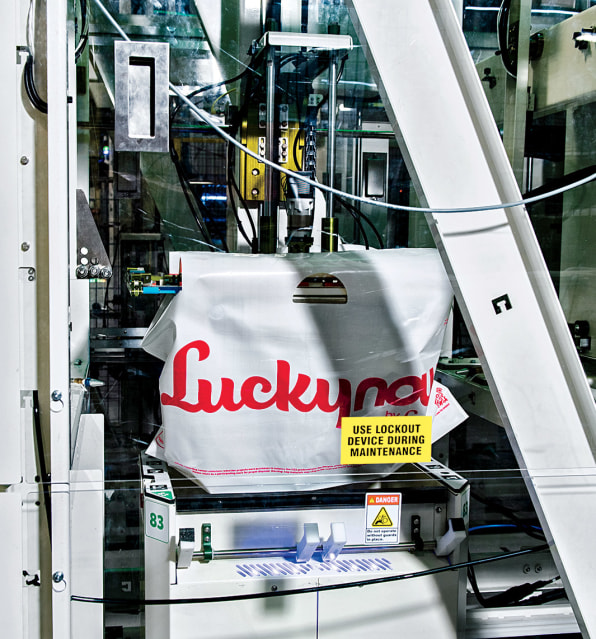
Aamir argues that this model is ill-suited for groceries: “The same technology that was used to automate digital cameras and shoes cannot be applied to cilantro and Chobani yogurt,” he says.
There are a surfeit of companies working to solve grocery’s original hangups: idiosyncratic orders that must be accurate; consumers resisting markup on “basic goods”; and the contradiction that lists may comprise 60 items, causing bottlenecks, but it’s to pickers’ advantage to work at breakneck speed. Albertsons partnered with a goods-to-person company called Takeoff Technologies. FreshDirect has worked with a competitor named Fabric. Walmart recently acquired a player named Alert Innovation. And H-E-B and Amazon have both tapped Norway-based AutoStore.
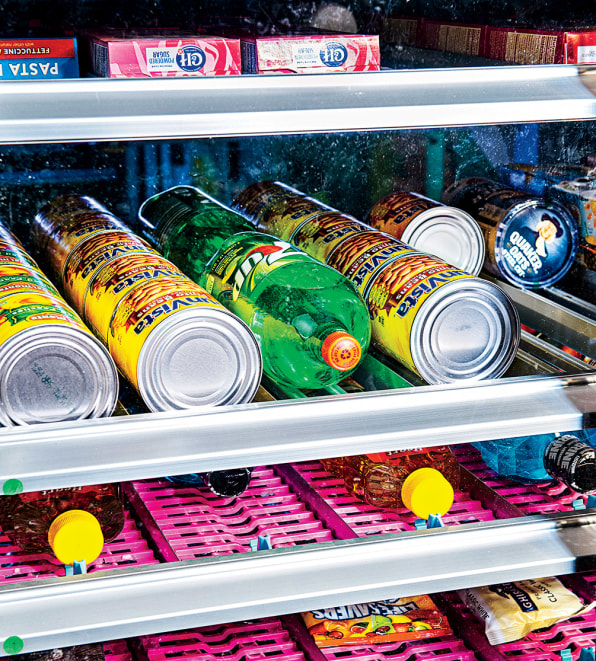
But it’s Aamir, a longtime Safeway executive, who has taken a methodical approach to rethinking the emerging sector within both e-commerce and grocery, developing a system and strategy that he believes can improve the customer experience and make the business worthwhile for retailers.
A NEW WAY TO ROBOT
Aamir argues that Fulfil’s edge is an affordable, accurate, person-less reconceptualization of the grocery fulfillment center that he dubs “robots-to-goods.” Fulfil’s model begins with a high-tech facility equipped with towers of trays in a 3D grid, surrounded by a maze of chutes, roller conveyors, and paths marked on the floor. Upon command, an army of Fulfil’s proprietary ShopBots dispatch to nodes via those paths where they beckon customers’ items.
ShopBots resemble Xerox photocopiers if their lids were removed and you hollowed out the machines, lined them with totes, and added wheels. They understand the precise size and weight of every packaged item in the 3D grid (loose items get a close estimate), and Aamir says they’ve harnessed years worth of work with algorithms and machine learning to optimize bagging. Sensors and heat maps ensure that a watermelon or Tide bottle never crushes a loaf of bread. To test the bots’ adjustable, cushioned bins, Fulfil picked random spots to drop raw eggs and see if they’d break, but none did.
Notably, ShopBots are the only automated grocery pickers capable of working in freezers. Logistics get tricky in cold environments: Circuit boards become sluggish if frozen, and they can freeze quickly. Aamir says that the simple end around was capping the elapsed time that ShopBots spend in its frozen towers. They’re limited to a minute or two.
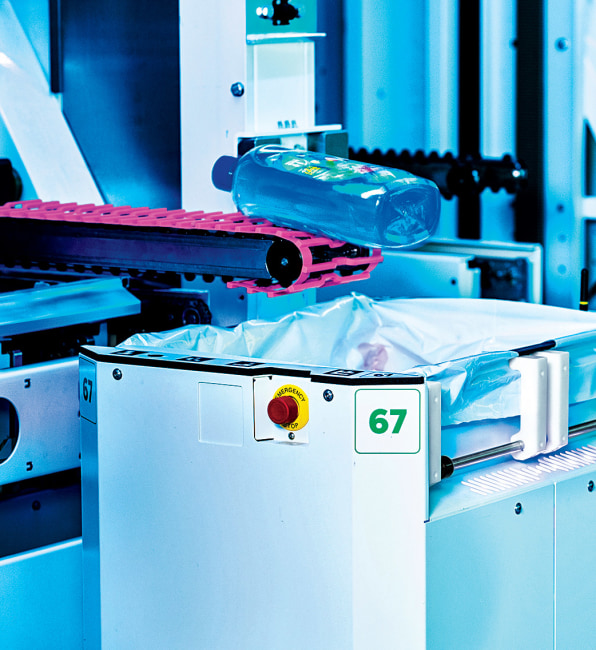
Fulfil also catalogs products individually. The industry standard is to lump all large, organic Hass avocados under one code; all small, conventionally grown McIntosh apples under another; and so forth. “Every tomato has an identity in our system,” Aamir notes.
One cool way in which this translates into its service is that Fulfil also logs physical scans of each item. By pairing those images with the items’ specific codes, it enables online shoppers to choose the actual piece of produce they want. They can sort tomatoes by size, bananas by ripeness—and, in theory, a whole pallet’s worth, not just what’s visible in the display. This feature hasn’t yet been implemented, but it’s only a matter of time. “Technically it’s possible tomorrow,” Aamir says. “The technology is there.”
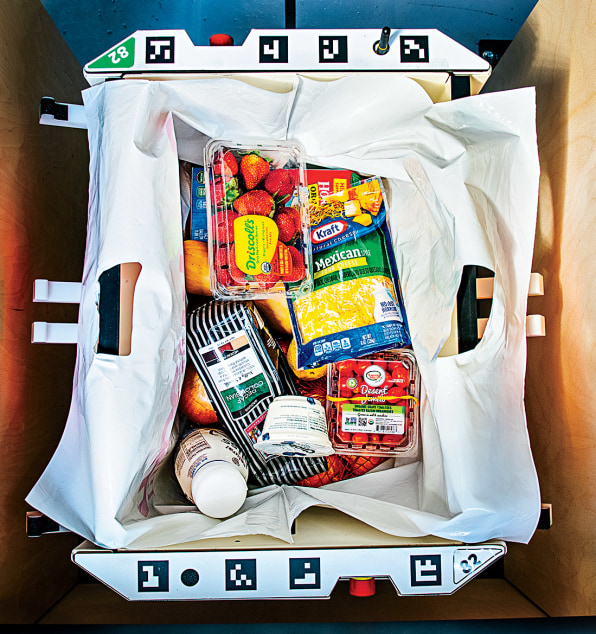
To let consumers choose specific products, Fulfil must update inventory by the nanosecond, and that innovation also has a side benefit: No more back-and-forth texts with shoppers after an order is underway, and no more well-meaning, split-second but often soul-crushing substitutions. What online grocery shopper hasn’t received gardenia-scented votive candles for the “4” and “0” birthday candles in their cart? Items go on hold, but orders are pulled minutes before pickup. Pickup occurs on the customer’s terms—in a few minutes, or later when convenient, as opposed to three prescheduled slots, all in the middle of tomorrow’s workday.
LIVE IN MOUNTAIN VIEW
Fulfil’s first fulfillment center opened in November in Mountain View, California, in partnership with the grocery chain Save Mart. It’s available to shoppers via the site Luckynow by Fulfil. The startup’s setup is 6,500 square feet—call it the footprint of two to three suburban homes, but with inventory stacked to the building’s ceiling. According to Aamir, it’s a dark store whose sales volume is capable of reaching $15 million a year, rivaling a grocery store three to four times its size.
Fulfil’s modular concept means facilities can take any form: nanosized in a compact urban grocery store or scaled up to a sprawling rural effort. “This is something that touches every household,” Aamir says. “It’s a massive market where every bit of improvement is helpful to everyone.”







































